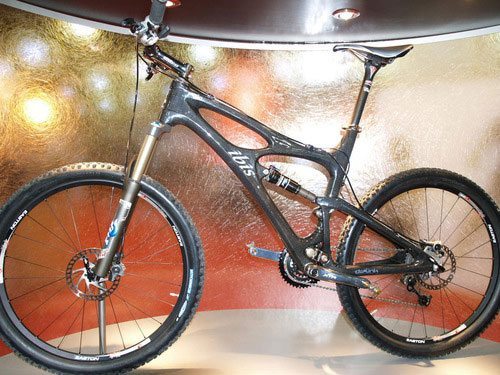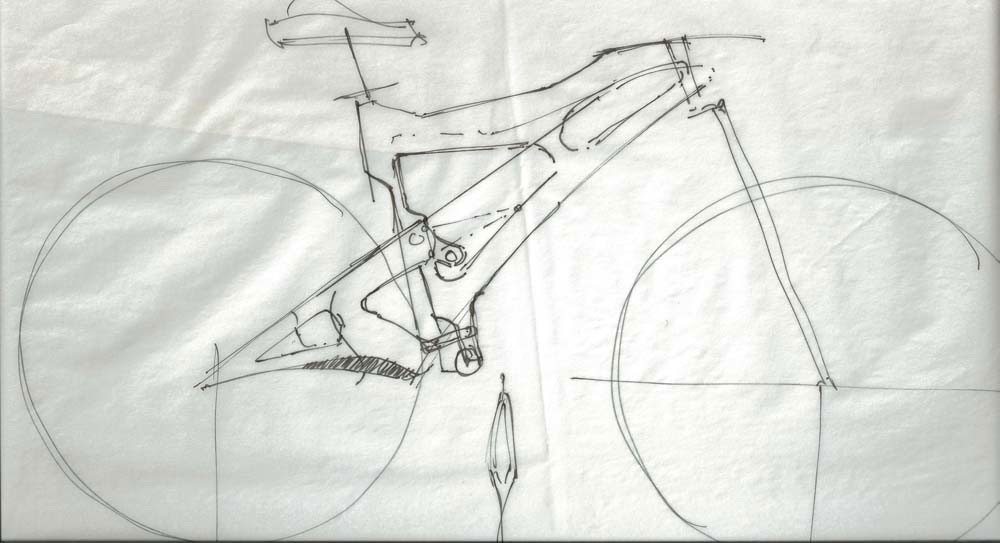Fast forward to 2002, and Hans Heim, who had just left Santa Cruz Bicycles, calls Nicol to ask about the future of Ibis. Near the end of his time at Santa Cruz, Heim had been thinking up a new way of developing bicycles: instead of working primarily on mechanics and then dressing up the frame, he wanted to build bikes by emphasizing industrial design throughout. But Heim was no longer involved in a bike company, so had nowhere to try out his new ideas. All he knew calling Nicol was that he had always loved the Ibis brand, that he wanted it to come back, and that a new Ibis could potentially be the brand he was looking for.
Initially, Nicol didn’t want back in. But Heim kept calling, and Nicol eventually agreed. After arriving at a deal with the attorneys who owned the trademarks, Heim also brought aboard Tom Morgan from Giant, and Roxy Lo, an Industrial Designer working at Pottery Barn, to form Ibis 2.0.
Before re-introducing themselves to the bicycling world, however, Heim tried to decide where bicycle design—and thus the bicycle market—was going to be in two years. What he came away with were the “Three Innovations” for the new Ibis (which Nicol also calls the “Leaps of Faith” or the “Three Gambles”). Those innovations led to the creation of the Ibis Mojo, which marked the re-launch of Ibis when it was unveiled at Interbike in 2005.

The first innovation was carbon fiber monocoque construction. Not only was Nicol already familiar with carbon fiber from the “great experiment” back in ‘88, but the newer monocoque allowed Ibis to experiment with its second innovation: design.
Monocoque means “a structure in which the shell bears most of the stress,” or, in other words, a structure with few or no joints. With Ibis 2.0, Heim was pushing away from what he called the “Tyranny of Tubes.”
As Nicol explains, “We would not be subjected any more to round or straight tubes. We wanted to build a bike with an organic, gorgeous shape. We were going to fight uphill for carbon monocoque.”
To draw up these organic shapes, Lo was given a page with a few strategically placed points on it, representing the head tube, seat tube, bottom bracket, suspension linkage points, and axles. Then she was told to “connect the dots.” Nineteen hundred hours of CAD time later, they had the shape of the Mojo.

The third innovation came with Heim’s prediction on suspension. He had told Nicol from the outset that Dave Weagle’s dw-link system was a big improvement on previous systems. Not only that, but that long-travel suspension would become increasingly more accepted as legitimate for a cross country bike, due to the efficiency of the dw-link while climbing. “[And this is] back when few people considered suspension bikes acceptable for any cross country applications,” says Nicol.
These Three Innovations and the Mojo—the first-ever monocoque carbon fiber all-mountain full-suspension bike—were gambles for Ibis. And considering that they re-entered the cycling world with this bike, they had based the success of the company on it.
Though the technology for building bikes out of carbon fiber had advanced, the biggest concern with the Mojo’s monocoque carbon fiber frame was still the material itself—that it would blow apart when a rock hit it, exposing riders to dangerous, shattered fibers.
Ibis offered a “crash replacement” warranty, and noted that carbon is often easier and less expensive to replace than aluminum, titanium, or steel. But the Mojo held together, and the market began to accept the durability of the material.
Ibis then introduced an updated version of the Mojo, the SL (or “super lightweight”), which added titanium and more carbon to the frame, then the Mojo HD (with 20mm more rear-wheel travel, bringing it to 160mm, and a frame reinforcement that made it massively stiff). And later, the Mojo SL-R, which uses an entirely new monocoque molding technology. Each iteration, designed to suit different riders’ needs, built upon the original time the company poured into the Mojo.
“Because we took three years to develop the original Mojo, we set the bar really high,” says Nicol. “We don’t have model years, we just have models. We just make sure the bikes are right when they come out. [And name-wise], I think the continuity is good, so if it’s not broke [we] don’t fix it.”
They’re still a small company (11 employees), and Nicol says that this time, they plan to stay that way, with no plans to sell.
In addition to the Mojo line, Nicol and company offer the Silk SL, their carbon road bike; the new Hakkalügi, their carbon cyclocross bike; and will soon begin selling their Ripley carbon full-suspension 29er.
In many ways, the bottom line for Ibis is what its founder discovered in Mill Valley 31 years ago: maintain excellent craftsmanship and don’t be afraid of new materials, appearances, or building techniques.
“Having to change over to monocoque construction,” says Nicol, “that really allowed us to change our game artistically. We’re getting out of triangles and into organic shapes.”
Then Nicol adds: “And by the way, there’s nothing wrong with triangles. They’re all over our bike. They just have to be a little more swoopy.”
Like an Ibis in flight.
